Speakers
Invited Speakers:
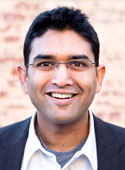
Raag Airan MD PhD
Stanford University, USA
Raag Airan MD PhD is an Assistant Professor of Radiology and, by courtesy, of Materials Science & Engineering at Stanford University.
View full bio
He is a clinical neuroradiologist and develops novel interventions for the nervous system using focused ultrasound and ultrasound-mediated drug delivery, with particular interest in noninvasive neuromodulation. He studied mathematics and physics as an undergraduate at MIT and then earned his MD and PhD in Bioengineering at Stanford University, where he worked with Karl Deisseroth to make some of the initial advances of optogenetics. He completed his clinical training at Johns Hopkins before returning to Stanford in 2016.
Homepage: airan-lab.stanford.edu/
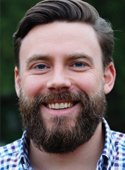
Til Ole Bergmann PhD
University Hospital Tübingen, Germany
Til Ole Bergmann received a PhD in Psychology from the University of Kiel working with Hartwig Siebner, and spent PostDocs, with Ole Jensen at the Donders Institute in Nijmegen, and with Ulf Ziemann and Jan Born at the University of Tübingen, before he recently became PI of the Neurostimulation group in Mainz.
View full bio
Til is investigating the function of neuronal oscillations for organizing information processing and gating synaptic plasticity in the wake and sleeping human brain. His methodological focus is on the simultaneous combination of transcranial brain stimulation (TMS/TCS) with electrophysiology (EEG/MEG) and the advance of brain state-dependent brain stimulation.
Homepage: www.tobergmann.de
Twitter: https://twitter.com/tobergmann
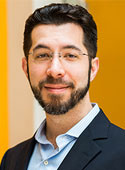
Ed Boyden PhD
Massachusetts Institute of Technology, Cambridge, USA
Ed Boyden is Y. Eva Tan Professor in Neurotechnology at MIT, associate professor of Biological Engineering and Brain and Cognitive Sciences at MIT's Media Lab and McGovern Institute for Brain Research, and was recently selected to be an Investigator of the Howard Hughes Medical Institute (2018).
View full bio
His group develops tools for analyzing and repairing complex biological systems such as the brain. Amongst other recognitions, he has received the Canada Gairdner International Award (2018), the Breakthrough Prize in Life Sciences (2016), and the NIH Director's Pioneer Award (2013), and is an elected member of the American Academy of Arts and Sciences (2017).

Jonathan Downar MD PhD FRCPC
Toronto Western General Hospital, Canada
Jonathan Downar is an Associate Professor of Psychiatry at the University of Toronto, Scientist at the Krembil Research Institute, and Director of the MRI-Guided rTMS Clinic at the Toronto Western Hospital.
View full bio
Open since 2011, this free clinic receives >700 new referrals annually and treats >80 patients every day. Dr. Downar is a clinician-scientist with a PhD in functional neuroimaging. His work has been published in Brain Stimulation, Biological Psychiatry, Nature Neuroscience, Nature Medicine, and Lancet. His current research focuses on improving the cost-effectiveness, accessibility, success rates, and range of indications for therapeutic rTMS in psychiatric disorders.
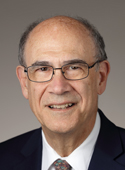
Mark Hallett
Chief of the Medical Neurology Branch and the Human Motor Control Section, National Institute of Neurological Disorders and Stroke, National Institutes of Health (NIH), USA
Dr. Hallett is the Chief of the Medical Neurology Branch and the Human Motor Control Section, National Institute of Neurological Disorders and Stroke, National Institutes of Health, Bethesda, Maryland. He trained at Harvard Medical School, NIH, Massachusetts General Hospital and the Institute of Psychiatry in London.
View full bio
From 1976 to 1984, Dr. Hallett was the Chief of the Clinical Neurophysiology Laboratory at the Brigham and Women's Hospital and rose to Associate Professor of Neurology at Harvard Medical School. From 1984, he has been at the National Institute of Neurological Disorders and Stroke where he also served as Clinical Director of NINDS until July 2000. He is past President of the American Association of Neuromuscular and Electrodiagnostic Medicine and the International Parkinson and Movement Disorder Society, past Vice-President of the American Academy of Neurology, and current Past-President of the International Federation of Clinical Neurophysiology. His work mainly deals with principles of motor control and the pathophysiology of movement disorders.
Dr. Hallett’s laboratory has been pioneering in the use of non-invasive brain stimulation. A number of the basic effects of stimulation and their physiology were reported from his laboratory. In the early days, there were no guidelines for safety with rTMS, and several seizures were produced in normal subjects. Dr. Hallett then organized the first international safety conference, and has helped organize subsequent conferences at about 10-year intervals, including the recent one in October 2018. His laboratory has also been the training ground for many investigators using NIBS all over the world. He also helped A. Zangen and associates develop the H-coil, which led to an NIH patent, and licensing by the Brainsway company.

Sarah Hollingsworth Lisanby MD NIH
USA
Dr. Lisanby is an internationally recognized expert in the rational design of neuromodulation technologies. Her work is translational, spanning nonhuman primates, healthy humans, and clinical populations. JP Gibbons Endowed Professor with Tenure and former Department Chair of the Duke Department of Psychiatry, she founded and directed the Duke Brain Stimulation and Neurophysiology Division that encompasses interdisciplinary research labs spanning technology development, pre-clinical modeling, translational neuroscience, clinical trials, and clinical application.
View full bio
Prior to being recruited to Duke as Department Chair, Dr. Lisanby founded and directed the Columbia Division of Brain Stimulation, where she was Professor of Psychiatry. Dr. Lisanby has been principal investigator on a series of NIH and DARPA funded studies on the development of novel neuromodulation technologies, including studies on the rational design of magnetic and electrical seizure therapies. Her team pioneered magnetic seizure therapy (MST) as a novel depression treatment from the stages of animal testing, first in human, and now international clinical trials. She led series of studies involving transcranial magnetic stimulation (TMS), electroconvulsive therapy (ECT), MST, vagus nerve stimulation (VNS), deep brain stimulation (DBS) and other devices. Dr. Lisanby published a series of studies that established the paradigm of fMRI-guided TMS during working memory training to improve working memory performance in healthy volunteers, and to remediate working memory deficits following sleep deprivation. This paradigm has been extended to mitigate the effects of age-related decline in working memory.
In October 2015, she took a leave of absence from Duke to serve as Director of Translational Research at NIMH, where she now oversees a research funding portfolio of approximately $400 million and helps set a national agenda for research on mental illness. Dr. Lisanby co-led and presently serves on the NIH BRAIN Initiative Team on large-scale recording and modulation devices. In addition to these extramural activities, Dr. Lisanby founded and directs the Noninvasive Neuromodulation Unit (NNU) in the Experimental Therapeutics Branch in the NIMH Intramural Research Program, creating an important bridge between the Institute’s extramural and intramural research efforts. The NNU specializes in the use of noninvasive neuromodulation tools to measure and manipulate neuroplasticity to improve human brain health.
A prolific author with over 250 scientific publications, she has also received national and international recognition, including a Distinguished Investigator Award from the National Alliance for Research on Schizophrenia and Depression (NARSAD), the Max Hamilton Memorial Prize of the Collegium Internationale Neuro-Psychopharmacologicum (CINP), the Gerald Klerman Award from the National Depression and Manic Depression Association (NDMDA), and the Eva King Killam Research Award from the American College of Neuropsychopharmacology (ACNP). Dr. Lisanby’s prodigious research life has been matched by extensive service to NIMH and beyond. She has been a member of the NIMH Board of Scientific Counselors since 2013, and has chaired or been a member of a variety of NIH Study Sections since 2004. Dr. Lisanby served on the FDA Neurological Devices Advisory Panel, is on five editorial boards, and has held key leadership positions with numerous professional associations, including serving as President for the Association for Convulsive Therapy/International Society of Neurostimulation, and the International Society for Transcranial Stimulation, and Chair of the American Psychiatric Association Task Force to Revise the Practice on Electroconvulsive Therapy (ECT). Dr. Lisanby also has a strong record of mentoring, personally nurturing over 50 individuals in the past 10 years.
Dr. Lisanby received dual Bachelor of Science degrees in Mathematics and Psychology from Duke University, where she went on to receive an M.D. and complete a residency in Psychiatry, serving as Chief Resident. In 1995 Dr. Lisanby joined Columbia University for a postdoctoral fellowship and joined the faculty in 1998. She was named Director of the Division for Brain Stimulation and Neuromodulation at Columbia University/New York State Psychiatric Institute in 2005, and Professor of Clinical Psychiatry at Columbia University in 2007, before returning to her alma mater as Chair for the Department of Psychiatry at Duke University in 2010.
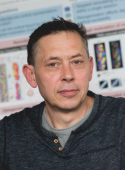
Dirk Jancke
Ruhr-University Bochum, Germany
Dirk Jancke heads the Optical Imaging Group at the Institut für Neuroinformatik, Ruhr University Bochum, Germany. He studied Sport Science and Biology and received his PhD from the Ruhr University Bochum in 1997.
View full bio
From 2000 to 2002 he joined Amiram Grinvald’s lab at the Weizmann Institute in Israel as a postdoc. His research focusses on visual brain functioning using in vivo optical imaging in combination with optogenetic tools in various species. His passion is trying to understand how the brain exploits its limited capacities to organize both flexible and stable behavior under ever changing environmental conditions and tasks.
Homepage: http://jancke-lab.de/

Lucas Parra
City University of New York, USA
Lucas C. Parra is Harold Shames Professor of Biomedical Engineering at the City University of New York (CUNY). He received his Ph.D. in Physics from the Ludwig-Maximilians-Universität in 1996 with research in the area of machine learning.
View full bio
Prior to joining CUNY he worked on medical imaging at Siemens Corporate Research (1995-1997) and acoustic signal processing at Sarnoff Corporation (1997-2003). His research on transcranial electrical stimulation focuses on elucidating some of the basic cellular mechanisms of electric neurostimulation. His lab has pioneered the use of computational optimization for targeted brain stimulation with multiple electrodes. His lab also works on brain-computer interface technologies with various real-world applications. Dr. Parra is co-founder of Soterix Medical, Neuromatters, and Kcore Analytics.
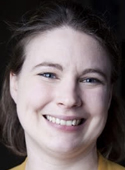
Charlotte Stagg MRCP DPhil
Wellcome Centre for Integrative Neuroimaging (WIN), University of Oxford, UK
Dr Charlotte (Charlie) Stagg is Professor of Human Neurophysiology and Head of the Physiological Neuroimaging Group at the Wellcome Centre for Integrative Neuroimaging (WIN), University of Oxford, UK. She has held a Sir Henry Dale Fellowship, funded by the Wellcome Trust and the Royal Society, since 2014.
View full bio
Her inter-disciplinary group uses multi-modal neuroimaging and non-invasive brain stimulation approaches to understand the physiological processes underlying motor plasticity, both in the context of learning new motor skills and regaining function after a stroke. Her work has two overarching themes: to understand the mechanisms underpinning motor learning, and to develop non-invasive brain stimulation as a potential therapeutic intervention for rehabilitation.
https://www.ndcn.ox.ac.uk/research/physiological-neuroimaging-group
twitter: @cjstagg

Aurore Thibaut
Coma Science Group, Cyclotron Research Centre, University of Liège, Belgium
Dr. Thibaut has a master in Physical Therapy and Rehabilitation and did a specialization in Neuroscience (University of Liege in Belgium). She did her PhD with the Coma Science Group (Pr. S. Laureys, GIGA Research, University of Liege, Belgium) and currently has a FNRS post-doctoral position.
View full bio
Her research focuses on brain direct current stimulations in patients with disorders of consciousness trying to improve brain plasticity and facilitate the recovery of these patients. She is also working with neuroimaging and electrophysiology to objectify brain plasticity linked to stimulation. In addition, she leads the treatment subgroup of the IBIA DOC-SIG with Dr. C. Schnakers and Pr. N. Zasler as chairs. Dr. Thibaut also closely collaborates with Pr. F. Fregni and the Spaulding Neuromodulation Centre, Harvard Medical school, Boston, with whom she works on new non-invasive brain stimulation techniques to improve brain function by enhancing cortical activity and connectivity in diverse conditions such as concussion or chronic pain.
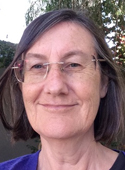
Janet Taylor
Professor of Human Neurophysiology, Edith Cowan University (ECU), Australia
Janet Taylor is a Professor of Human Neurophysiology in the School of Medical and Health Sciences at Edith Cowan University in Perth, Australia
View full bio
She is a current Senior Editor for the Journal of Physiology and an Associate Editor for Exercise and Sports Science Reviews. Her research focuses on how the human motor pathway changes in response to activity such as stimulation of the brain or nerves, training or practice of motor tasks, and fatiguing exercise. Her aim is to better understand how repetitive activity alters the nervous system to contribute to improvements or decrements in motor performance in health and disease.
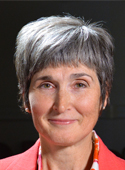
Zelma Kiss MD PhD
Deputy Editor, Neurosurgery, Brain Stimulation, University of Calgary, Calgary, Canada
Zelma HT Kiss MD PhD is a clinician-scientist and Professor in the Departments of Clinical Neurosciences/Psychiatry and the Hotchkiss Brain Institute at the University of Calgary in Alberta, Canada.
View full bio
She trained in neurosurgery and completed a PhD in neurophysiology at the University of Toronto in 1998, followed by post-doctoral training in Grenoble, France. Her research interests encompass the mechanisms of action of deep brain stimulation, somatosensory restoration with neural prostheses, electrophysiology, and new neuromodulation therapies, including use of focused ultrasound. Clinical expertise includes stereotactic radiosurgery and functional neurosurgery to treat movement disorders, pain, and psychiatric disorders. She is Medical Director of the Neuromodulation and MR-guided Focused Ultrasound Programs in Calgary.
Workshop Speakers:
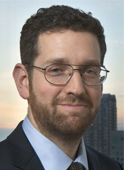
Marom Bikson
Deputy Editor, Technology and Modeling, Brain Stimulation, The City College of New York, NY, USA
Marom Bikson, is a Cattell Professor of Biomedical Engineering at The City College of New York (CCNY) of the City University of New York (CUNY) and co-Director of the Neural Engineering Group at the New York Center for Biomedical Engineering.
View full bio
The translational R&D activity of his group spans pre-clinical studies, computational models, device design and fabrication, regulatory activities, and clinical trials. Technologies developed by his group are in clinical trials in over 100 medical centers and include neuromodulation interventions for neuropsychiatric disorders, intra- and post-operative sensors, patient compliance tools, and surgeon training simulators. Dr. Bikson has published over 200 papers and book-chapters and is inventor on over 30 patent applications. He is known for his work on brain targeting with electrical stimulation, cellular physiology of electric effects, and electrical safety. Dr. Bikson co-invented High-Definition transcranial Direct Current Stimulation (HD-tDCS), the first non-invasive, targeted, and low-intensity neuromodulation technology. Dr. Bikson consults for medical technology companies and regulatory agencies on the design, validation, and certification of medical instrumentation. Dr. Bikson is co-founder of Soterix Medical Inc. and WiPOX LLC. Prior to becoming faculty at CUNY, Dr. Bikson was a research fellow at the University of Birmingham Medical School, UK and a Research Associate at Sontra Medical LLC, in Cambridge Mass. Dr. Bikson received a Ph.D. in Biomedical Engineering from Case Western Reserve University, in Cleveland OH, and a B.S. in Biomedical Engineering from Johns Hopkins University, Baltimore MD.
Website: http://bme.ccny.cuny.edu/people/faculty/mbikson
Lab: http://neuralengr.com/

Paul Fitzgerald MBBS PhD
Deputy Editor, Psychiatry, Brain Stimulation, Monash Alfred Psychiatry Research Centre, The Alfred and Monash University Central Clinical School, Melbourne, Victoria, Australia
Professor Paul Fitzgerald is Professor of Psychiatry, Deputy Director and Consultant Psychiatrist at the Monash Alfred Psychiatry Research Centre, a joint research centre of Monash University and the Alfred Hospital in Melbourne, Australia.
View full bio
He runs a research program focussed on the conduct of investigative studies of brain function & dysfunction as well as the conduct of a variety of novel clinical trials in Mood, Anxiety, Psychotic and Developmental Disorders. He has published over 250 papers and received grant funding from a range of Australian and international organisations.
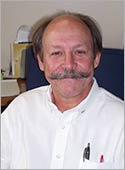
Mark S. George
Editor-in-Chief, Brain Stimulation, Medical University of South Carolina, Charleston, SC, USA
In 1995 Dr. George, a South Carolina native, returned to Charleston and built a campus-wide research brain imaging division and the brain stimulation laboratory in the Department of Psychiatry. As an undergraduate student in philosophy at Davidson College, Dr. George began studying the relationship between mind and brain, or brain/behavior relationships.
View full bio
He has continued this interest throughout his career with a focus on using brain imaging and brain stimulation to understand depression and devise new treatments. He received his medical degree from MUSC in 1985, where he continued with dual residencies in both neurology and psychiatry. He is board certified in both areas.
Following his residency training he worked for one year (1990-91) at the Institute of Neurology, Queen Square, London, England. He then moved to Washington, DC, working in the Intramural National Institute of Mental Health (NIMH). He was one of the first to use functional brain imaging during normal emotions as well as in depression and mania. He has grown the science of brain stimulation, both in terms of how the treatments work in the brain, and in critically evaluating their therapeutic applications, especially in treating depression. He may be unique in being the only living neuroscientist with 2 FDA approved treatments that stem from their work. Transcranial magnetic stimulation (TMS) was FDA approved for treating depression in October, 2008. In June 1998 at MUSC, he also pioneered another new treatment for resistant depression, vagus nerve stimulation (VNS). This was FDA approved in 2006.
He is a world expert in brain stimulation, and depression, and is the editor-in-chief of a new journal he launched with Elsevier in 2008 called, Brain Stimulation: Basic, Translation and Clinical Research in Neuromodulation. He has been continuously funded by NIH and other funding agencies since his fellowships. He has received numerous national and international awards. In 2009 US News and World Report named him one of 14 ‘medical pioneers who are not holding back’. He has published over 400 scientific articles or book chapters, and has written or edited 6 books.

Zelma Kiss MD PhD
Deputy Editor, Neurosurgery, Brain Stimulation, University of Calgary, Calgary, Canada
Zelma HT Kiss MD PhD is a clinician-scientist and Professor in the Departments of Clinical Neurosciences/Psychiatry and the Hotchkiss Brain Institute at the University of Calgary in Alberta, Canada.
View full bio
She trained in neurosurgery and completed a PhD in neurophysiology at the University of Toronto in 1998, followed by post-doctoral training in Grenoble, France. Her research interests encompass the mechanisms of action of deep brain stimulation, somatosensory restoration with neural prostheses, electrophysiology, and new neuromodulation therapies, including use of focused ultrasound. Clinical expertise includes stereotactic radiosurgery and functional neurosurgery to treat movement disorders, pain, and psychiatric disorders. She is Medical Director of the Neuromodulation and MR-guided Focused Ultrasound Programs in Calgary.
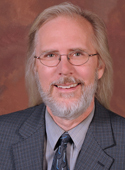
Peter Rosenquist MD
Board-Certified Psychiatrist and Professor and Executive Vice Chair for the Department of Psychiatry and Health Behavior, Medical College of Georgia, Augusta University, USA
Peter Rosenquist MD is a board-certified psychiatrist and Professor and Executive Vice Chair for the Department of Psychiatry and Health Behavior in the Medical College of Georgia at Augusta University.
View full bio
Dr. Rosenquist is also Director of Therapeutic Neurostimulation comprising clinical and research provision of electroconvulsive therapy, transcranial magnetic stimulation and transcranial direct current stimulation therapies. His current research is focused primarily on treatment resistant mood disorders, in particular therapeutic neurostimulation techniques.
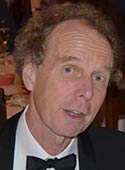
John Rothwell PhD
Deputy Editor, Clinical Neuropsychology, Brain Stimulation, University College London, Queen Square, London, UK
After a PhD at the University of London, John Rothwell, became a Senior Scientist in the MRC Human Movement and Balance Unit at the Institute of Neurology.
View full bio
He was Head of the Sobell Department of Motor Neuroscience and Movement Disorders at the UCL Institute of Neurology from 2001-2005, and is currently Professor of Human Neurophysiology. Research projects include using neurophysiological techniques to study the mechanisms of neural plasticity that underpin motor learning, and using this knowledge to devise new therapeutic interventions for rehabilitation after stroke.
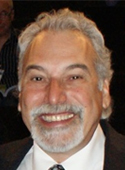
Harold A. Sackeim PhD
Founding Editor, Brain Stimulation, Columbia University, New York, NY, USA
Dr. Harold A. Sackeim is Professor of Clinical Psychology in Psychiatry and Radiology, College of Physicians and Surgeons, Columbia University. He served as Chief of the Department of Biological Psychiatry at the New York State Psychiatric Institute for 25 years. He is also the founding Editor of the journal, Brain Stimulation: Basic, Translational, and Clinical Research in Neuromodulation.
View full bio
He received his first B.A. from Columbia College, Columbia University (1972), another B.A. and a M.A. from Magdalen College, Oxford University (1974) and his Ph.D. from the University of Pennsylvania (1977), where he also completed his clinical training in the Department of Psychiatry. He joined the faculty of Columbia University in 1977, where he remains today.
His research has concentrated on the neurobiology and treatment of mood disorders. He has made numerous contributions to the understanding of pathophysiology of major depression and mania through use of brain imaging techniques and by examining the role of lateralization of brain function in normal emotion, neurological disorders, and psychiatric illness. For 30 years, he led the clinical research on electroconvulsive therapy (ECT) at Columbia University and the New York State Psychiatric Institute. This work has identified fundamental factors in this treatment that are responsible for its efficacy and side effects, and has radically altered understanding of both therapeutics and mechanisms of action. This research program has provided compelling evidence regarding the localization of the brain circuits involved in antidepressant effects, and has revamped understanding of the underpinnings of ECT’s effects on mood, behavior, and cognition. Dr. Sackeim is widely credited with transforming the use of this treatment worldwide. Dr. Sackeim has directed programs at the New York State Psychiatric Institute and New York Presbyterian Hospital in the pharmacological treatment of late-life depression, and in the use of Transcranial Magnetic Stimulation (TMS), Vagus Nerve Stimulation (VNS), Deep Brain Stimulation (DBS) and other forms of focal brain stimulation. Dr. Sackeim is the inventor of Magnetic Seizure Therapy (MST), now undergoing clinical trials and has recently developed FEAST (Focal Electrically-Administered Seizure Therapy. Dr. Sackeim introduced functional brain imaging to the medical center at Columbia in 1980, and directed a large group using Positron Emission Tomography (PET) and Magnetic Resonance Imaging (MRI) to study pathophysiology and treatment effects in mood disorders, anxiety disorders, Lyme disease, substance abuse, Alzheimer’s disease, and normal aging. Other work directed by Dr. Sackeim involved preclinical, primate research on the functional significance of structural brain changes (neurogenesis) induced by different forms of brain stimulation.
Dr. Sackeim is a member of the editorial board of several journals, and has received many national and international awards for his research contributions. These include three Distinguished Investigator Awards from the National Association for Research in Schizophrenia and Depression (NARSAD), a MERIT Award from the National Institute of Mental Health (NIMH), the Joel Elkes International Award from the American College of Neuropsychopharmacology (ACNP), election as Honorary Fellow of the American Psychiatric Association, and the Award for Research Excellence from the New York State Office of Mental Hygiene, Edward Smith Lectureship, National Institute of Psychobiology, Israel, the lifetime achievement award form the EEG and CNS Society, and the NARSAD Maddox Falcone Prize for lifetime achievement in research on affective disorders. He is past President of the Society of Biological Psychiatry and the Association for Research in Nervous and Mental Disease. He has authored more than 425 publications.
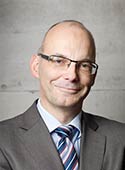
Ulf Ziemann MD
Deputy Editor, Pharmacology, Brain Stimulation, University of Tuebingen, Tuebingen, Germany
Director of the Department of Neurology and Stroke, and Hertie-Institute for Clinical Brain Research, University of Tuebingen, Germany. Special expertise: Motor cortex excitability and plasticity, motor learning, non-invasive brain stimulation.
View full bio
Deputy Editor of "Brain Stimulation", "Clinical Neurophysiology" and "Frontiers in Human Neuroscience". Awards: Richard-Jung Prize of the German Society of Clinical Neurophysiology, Merit Award of the National Institute of Health. 275 peer-reviewed publications, h-index 67.
